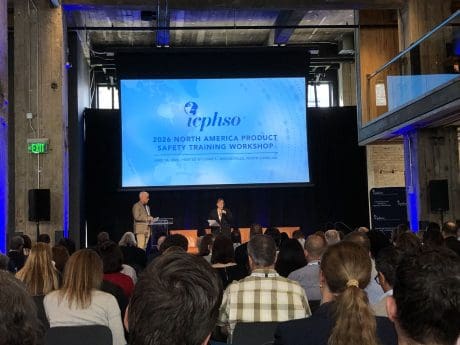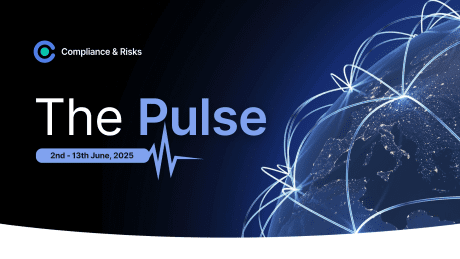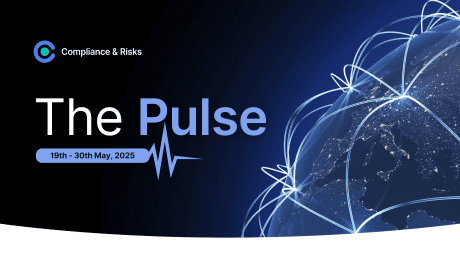
Wither The RoHS Recast? EU RoHS Recast On Hold

Authored By Mike Kirschner, President, Design Chain Associates (DCA)
We may still be two or more years away from the recast of RoHS 2, based on a newly issued impact assessment report. The study to support the assessment of impacts associated with the general review was issued last month and, despite “Final report” being on the front page of the (still-in-need-of-editing) 248-page document, the Executive Summary states “The assessments of impact have not been finalised in this study and should therefore be seen as preliminary.” While this statement may be mildly confusing, the report details several issues and noted that “The Commission decided to suspend the work on the revision of the Directive with an impact assessment and a possible legislative proposal under the current Commission’s term.”
The current Commission’s term of office runs until October 31, 2024. So, we may not see a recast of RoHS until after the next Commission’s term begins. This was decided last fall at the meeting of the Member States’ Expert Group on RoHS because “a number of related processes were underway, the outcome of which might well impact the RoHS review.”
Issues identified and analyzed include these topics:
Increasing The Transparency And Clarity Of RoHS Exemption Mechanisms:
The complexity, lack of process transparency, lack of adequate and up-to-date guidance and “high administrative burden” are identified as key issues. Table 5 in the Study provides examples of how much of the restricted substances are placed on the EU market annually due to exemptions. It ranges from an estimate of between 150 and 9400 metric tons of lead for Annex III exemption 7(a) (this wide range tells me the data this is based on is problematic) down to a tenth of a gram or less of cadmium for Annex IV, exemption 44.
Roger Franz of TE Connectivity notes that, even after 20 years of RoHS,”[t]here’s a severe lack of suitable substitutes for lead in machinable metals, high-temperature solder, and glass or ceramic components. Recent work by multiple industry task groups has found that in most cases, there currently are just no viable replacements for current usages of lead.” Yet the European Commission continues to push this rope and recent consultant reports threaten to further complicate the already highly fragmented exemption landscape.
The previous report, Support for the evaluation of Directive 2011/65/EU from 2021, indicates an estimate (with a lot of caveats regarding methodology) that around 124,000 metric tons/year of lead was removed from the market between 2003 and 2016 due to RoHS restrictions. A Pareto analysis (and perhaps more stringent and comprehensive assessment of current usage) should be done to determine whether more action on lead, in particular, is warranted.
An alternative and potentially more effective (if undesirable by manufacturers) mechanism to drive manufacturers away from exemption-based incorporation of RoHS restricted substances in EEE may be to consider taxing their use. The revenues could be used to improve the recycling capabilities necessary to remove these substances from recycled materials. This is not one of the options indicated in the study. This would require a change in Article 5 to give the Commission more discretion in how to approach such de minimis situations.
Clarifying RoHS Substance Restriction Mechanisms
The continued lack of “a defined methodology for the periodic review of the list of restricted substances” has been a sore point for many over the past couple decades. The possibilities of adopting a REACH-like process and/or moving the substance restriction process to ECHA are considered.
Ensuring The RoHS Contributes To Increased Use Of Recovered Spare Parts
Today, spares that were previously placed on the market in the EU and were compliant with RoHS at that time or, per Article 4(5), placed on the market within certain timeframes, can continue to be used to repair or upgrade products that are currently on the market. Expanding that to open the geographical scope and/or expand the timeframes would reduce manufacturers’ administrative burden and provide a much better opportunity for reuse.
Ensuring That RoHS Contributes To The Uptake Of Recycled Material In EEE
The study found that “the RoHS limits do not currently play an obstructive role …” in limiting recyclability under WEEE. However, they found that other requirements, like POPs, was more impactful (and given what the Stockholm Convention is targeting for upcoming bans, this will continue to be the case). Interestingly, the impact of REACH was not mentioned in the executive summary, which seems like it would be still more impactful because of its broad scope and the frequent new Annex XVII restrictions. While numerous candidate list SVHCs impact EEE, few restricted substances do (broadly, anyway, but the upcoming PFAS restriction could have extraordinary impact on EEE).
Increasing The Efficiency Of The Transposition Of Amendments To The RoHS Directive In Member State National Law
This study shows that the frequent need for implementation of amendments to the RoHS Annexes leads to a lack of a level playing field across the EU and to additional administrative burden. As of September 2022, 2011/65/EU had been amended 80 times (plus two corrigendums). The different rates at which Member States implement these amendments and delegated acts results in technically dissimilar regulatory requirements between them. The consultants identify that turning RoHS into a regulation, which would come into force simultaneously across the EU, would reduce this problem as well as reduce the burdens on the Member States.
Improving The Consistency Of Substance Restriction Limits For Polybrominated Diphenyl Ethers (PBDE)
Since the Stockholm Convention restricted PBDEs after RoHS, and at a lower level, the EU POPs Regulation is on its way to reducing its limit to well below the RoHS limit. This will result in an inconsistency between the two regulations. They note that reducing (or eliminating?) the RoHS limit “should not lead to any environmental or social impacts” but “would likely cause economic impacts for the EEE industry that would have to amend contracts, purchasing agreements, specifications etc. and costs for those Member States that would have to implement the amendments in their national legislation through transposition.” I think those would be minor at best, since the industry is also required to comply with the POPs Regulation and other Stockholm Convention implementations in markets around the world.
Updating The Scope Of The RoHS Directive Regarding Photovoltaic Panels
I never understood why photovoltaic panels (PVPs) were excluded from the scope of RoHS as opposed to being granted exemptions for their use of (primarily) cadmium. The consultants make this suggestion: “remove the exemption [note that this is a scope exclusion; not an “exemption” – MK] for PVP under RoHS and adopt time-limited exemptions (e.g. 5 years). Industry would then have to apply for time-limited exemptions, which this would support alternatives and stimulate the development of substitutes.”
While I cannot say I’ve had a chance to read all 248 pages of this report yet, it is probably one of the more important tomes to review to understand the current situation with EU RoHS. This lays the groundwork for some of the revisions we can expect to see in RoHS 3 but leaves plenty of open questions.
Free Regulatory Insights For Your Inbox
Join 50,000 compliance professionals for updates on hot compliance issues and more – including market insights, webinars and the latest trends in compliance








